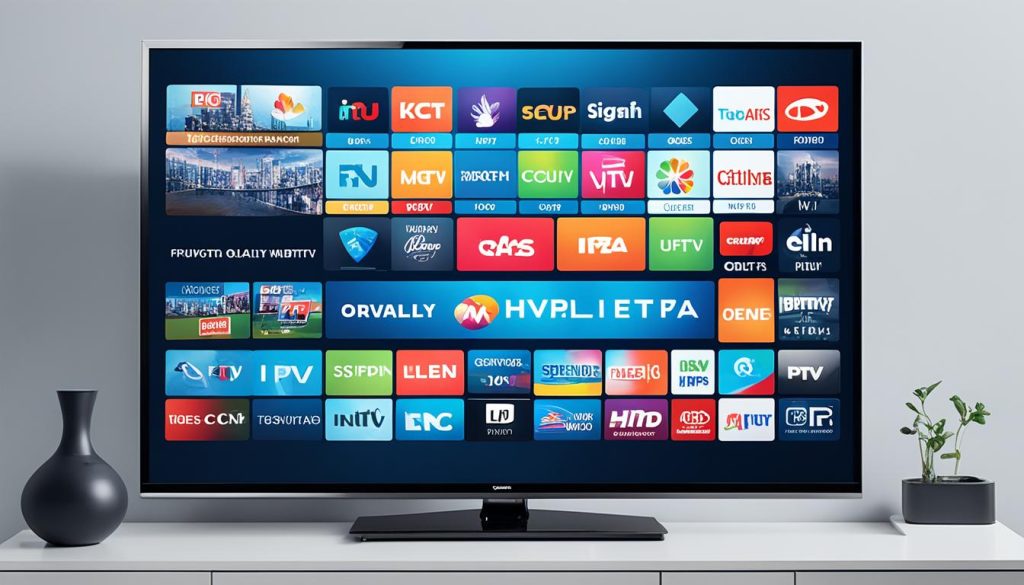The world of entertainment has evolved significantly over the past few decades, and one of the most prominent shifts has been the transition from traditional cable and satellite television to Internet Protocol Television (IPTV). IPTV allows users to access television content over the internet, giving them more control and flexibility over what they watch and when they watch it. As IPTV services continue to gain popularity, providers must address critical issues like content archiving and storage to ensure a seamless viewing experience for their subscribers. This article will explore how IPTV providers manage the storage and archiving of content, examining the approaches of five well-known IPTV providers and the challenges and solutions in this dynamic industry.
Key Takeaways
- IPTV providers must ensure high-quality content delivery to remain competitive in the evolving entertainment landscape.
- Content archiving and storage are crucial components of successful IPTV services, requiring robust strategies to manage the volume, quality, and security of digital content.
- IPTV providers employ advanced compression technologies, content delivery networks, and quality of experience monitoring to optimise the streaming experience for their subscribers.
- Effective bandwidth management and content caching are essential to maintain the quality and responsiveness of IPTV services.
- Continuous monitoring and analysis of IPTV content delivery metrics help providers identify and resolve quality issues, optimise performance, and enhance the overall viewer experience.
IPTV: The Rise of Internet Television
IPTV has revolutionised the way people consume television content. Unlike traditional cable and satellite TV, IPTV leverages the power of the internet to deliver content to viewers. This technology allows users to access a vast library of on-demand movies, TV shows, live sports, and more.
Flexibility and Customisation
IPTV offers a level of flexibility that traditional TV cannot match, with subscribers able to watch their favourite shows and movies on a wide range of devices, including smartphones, tablets, smart TVs, and computers. Additionally, IPTV providers often offer customisable channel packages, enabling users to pay only for the channels they want to watch, appealing to many consumers who seek cost-effective solutions.
On-Demand Content and Global Accessibility
With IPTV, users can access a vast library of on-demand content, allowing them to watch what they want, when they want. This convenience is a significant draw for viewers with busy schedules. Furthermore, IPTV transcends geographical boundaries, making it possible for users to access content from around the world. This is especially appealing to expatriates and international viewers.
Advanced Features Enhancing Viewing Experience
Many IPTV services come with advanced features like time-shifting, pause, rewind, and catch-up TV, enhancing the overall viewing experience. These features contribute to the rising popularity of IPTV as it continues to disrupt the traditional broadcasting industry.

How do IPTV providers ensure content quality?
Content archiving and storage are fundamental aspects of any IPTV service, involving the preservation, organisation, and management of vast amounts of digital content, including TV shows, movies, and live broadcasts. IPTV providers must implement robust strategies to ensure that content is readily accessible to subscribers while maintaining the highest quality and security standards. However, managing content archiving and storage in the world of IPTV comes with its own set of challenges, such as the volume of data, content rights and licensing, storage costs, content quality, content discovery, and security.
Strategies for Quality Assurance
To address these challenges, IPTV providers employ various strategies to ensure content quality. IPTVGANG, for example, invests in a scalable storage infrastructure to accommodate their ever-expanding content library, while also using advanced metadata tagging and secure access controls to protect their content. IPTVTOPS leverages advanced compression technologies and tiered storage solutions to manage storage costs and maintain content quality. IPTVGREAT encourages user-generated content and focuses on content personalisation, while IPTVRESALE aggregates content from various providers and conducts quality checks before reselling. IPTVUNLOCK prioritises security, employing digital rights management, secure storage infrastructure, and strict user authentication measures to protect their content library.
Video Compression and Encoding Techniques
Encoding is a crucial aspect of IPTV content delivery, as it involves converting the original video and audio content into a format that can be transmitted and played on different devices and platforms. IPTV providers must choose the right encoding format, such as MPEG-2, MPEG-4, H.264, or HEVC, based on factors like the source quality, target audience, available bandwidth, and supported devices. Optimising the bitrate and resolution of the IPTV content is also essential to balance quality and performance.
Content Delivery Networks and Bandwidth Management
A content delivery network (CDN) is a crucial component in IPTV content delivery and distribution. CDNs can improve the speed, scalability, and reliability of IPTV content delivery by distributing the content from the nearest or optimal server, handling peak traffic and load balancing, and providing redundancy and fault tolerance. IPTV providers also need to manage bandwidth effectively, using techniques like adaptive bitrate streaming to adjust the bitrate and resolution based on real-time network conditions and device capabilities.
Quality of Experience Monitoring
Monitoring and analysing the IPTV content delivery and distribution is crucial for IPTV providers to identify and resolve issues, optimise quality and performance, and understand viewer behaviour and feedback. Providers can use tools and platforms to measure and evaluate metrics such as bitrate, resolution, bandwidth, latency, packet loss, jitter, buffer, error rate, availability, uptime, downtime, response time, quality of service (QoS), and quality of experience (QoE). By integrating the data from various monitoring points, providers can determine the locations where quality has degraded and address the problems accordingly.
Conclusion
In the ever-evolving landscape of IPTV, content archiving and storage remain crucial components of a successful service. IPTV providers must address the challenges of volume, quality, security, and compliance to deliver an exceptional viewing experience to their subscribers. By employing strategies like scalable storage infrastructure, advanced compression technologies, content delivery networks, and quality of experience monitoring, IPTV providers can ensure high-quality IPTV content and navigate the complexities of content archiving and distribution.
As the IPTV industry continues to grow, content quality will remain a key focus area for providers to remain competitive and meet the evolving demands of their viewers. By continuously innovating and investing in the latest technologies, IPTV providers can stay ahead of the curve and provide their customers with a seamless, high-quality viewing experience that sets them apart in the dynamic and ever-changing world of digital entertainment.
The success of IPTV providers in delivering exceptional content quality and reliability will be a crucial factor in determining their long-term viability and growth in the market. With a relentless focus on optimising content storage, distribution, and quality, IPTV providers can solidify their position as the preferred choice for modern-day television viewers seeking a flexible, customisable, and high-quality entertainment experience.
FAQ
What are the key challenges IPTV providers face in content archiving and storage?
IPTV providers must address challenges such as the volume of data, content rights and licensing, storage costs, content quality, content discovery, and security when archiving and storing their vast content libraries.
How do IPTV providers ensure content quality?
IPTV providers employ various strategies, including investments in scalable storage infrastructure, advanced metadata tagging, secure access controls, compression technologies, tiered storage solutions, quality checks, and content personalisation to ensure the quality of their content offerings.
What are the important video encoding formats used in IPTV content delivery?
IPTV providers must choose the right encoding format, such as MPEG-2, MPEG-4, H.264, or HEVC, based on factors like source quality, target audience, available bandwidth, and supported devices. Optimising the bitrate and resolution is also crucial to balance quality and performance.
How do IPTV providers manage bandwidth and content delivery?
IPTV providers leverage content delivery networks (CDNs) to improve the speed, scalability, and reliability of content delivery. They also use techniques like adaptive bitrate streaming to adjust the bitrate and resolution based on real-time network conditions and device capabilities.
How do IPTV providers monitor and analyse the quality of their content delivery?
IPTV providers use tools and platforms to measure and evaluate metrics such as bitrate, resolution, bandwidth, latency, packet loss, jitter, buffer, error rate, availability, uptime, downtime, response time, quality of service (QoS), and quality of experience (QoE). This data helps them identify and resolve issues, optimise quality and performance, and understand viewer behaviour and feedback.



